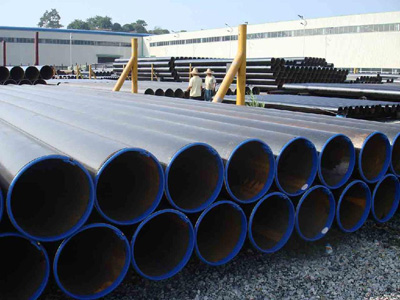 What’s New?
What’s New?
- Cause of well casing pipe damage and repairing technology
- How many steps are needed in the process of pipelines built?
- What are the commonly used welding methods for oil pipelines
- Do you know new anti-corrosion technologies for pipelines
- Development trend of global continuous pipe drilling technology
Welded pipe
Welded line pipes enjoy a wide acceptance in oil and gas transporting market for its selection variety and relatively low cost. Generally speaking, the welded steel pipes are divided into general welded pipe, galvanized welded pipe, oxygen welding tube, metric system welded tube, transformer tube, welding thin wall pipe and spiral welded pipe etc.
We provide welded pipe specifications:
Steel Grade: B, X42, X52, X60, X65, X70, X80Dimension: 2“--30”
Process: ERW, SAWL, HFW, JCOE
Mechanical Properties-Tensile Requirements
| Welded pipe | Grade A | Grade B |
|---|---|---|
| Tensile Strength, min, psi | 48,000 | 60,000 |
| Yield Strength | 30,000 | 35,000 |
What is ERW pipe?

ERW pipe, shorted for electronic resistance welded pipe, is manufactured by cold forming the steel coil into a round cylindrical pipe. Current passes between the two edges of the steel to heat the steel to a point at which the edges are able to connect together to form a bond using the actual welding process. ERW is normally used to transport liquid, such as petrol and gas, playing a significant role in the world line pipe transporting area.
Tube billet, a key raw material in manufacturing process, is a solid round bar of steel used to produce many pipe products. The chemical structure of the tube billet of ERW pipe has more advantages. The processing method such as desulfurization, dephosphorization and degassing makes the purity of ERW pipe billet much higher. The adding-in of specific chemical elements improves the toughness and the strength of the tube billet.
Besides, the ERW pipe tube billet is made of hot-rolled steel strip with cold rolling process while the seamless pipe tube billet is produced in hot rolling condition. The situation where seamless pipe tube billet is produced has some negative effects on the grain size, thus resulting in a less satisfying performance.
Advantage of ERW pipe
ERW pipe, one of the biggest benefits is that only the tube billet ends are heated during the manufacturing process, therefore the rest of the whole ERW pipe remains clean and only the welding part needs to be cleaned. This reduces the post-welding cleaning work, largely increasing the working efficiency and saving cost. Besides, owing to the almost clean and smooth surface, ERW pipes are easy to be applies with coating method.
Helical welded pipes and longitudinal welded pipes
According to the different welding seams, welded line pipes can be further categorized into two types, the helical welded pipes and longitudinal welded pipes. Both have extensive application in the field, but due to different manufacturing techniques, they have many differences.
As for longitudinal welding, the width of the steel plate should be strictly stuck to the diameter of the pipe. Once the steel is cut for rolling, it cannot be changed, which means the diameter of the longitudinal pipe is fixed. While for helical welding, it can achieve various diameters of pipes by rolling the steel plate with different angles. Thus, helical welding can be used to manufacture pipes of different diameters. It can use narrower steel to manufacture pipes into large diameter using large helical angle. But for pipes of the same length, the helical welding seam is 30 to 100% longer than the longitudinal welding seam, thus, the welding cost is higher and the welding efficiency is lower. Therefore, longitudinal welding is more used to produce small diameter pipes, while helical welding is always used for pipes of large diameters.

Generally speaking, helical welded pipes own more advantages than longitudinal welded pipes, enjoying more promising market; however, the manufacturing method is more complicated and it is more expensive. Knowing the differences of both pipes will help suppliers and clients choose the most suitable pipes according to your application and budget.
